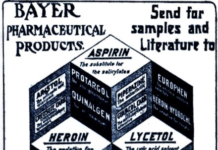1. The word Halloween first appeared in the 16th century and is a Scottish variant of All-Hallows-Even (“evening”), that is, the night before All Hallows Day. Although the phrase All Hallows is found in Old English (mass-day of all saints), All-Hallows-Even is itself not in use until 1556.
2. Some (though it is disupted) date Halloween’s origins back to the ancient Celtic festival of Samhain (pronounced sow-in). The Celts, who lived 2,000 years ago in what is now Ireland, the United Kingdom and northern France, celebrated their new year on November 1. This day marked the end of summer and the harvest and the beginning of the dark, cold winter, a time of year that was often associated with human death. Celts believed that on the night before the new year, the boundary between the worlds of the living and the dead became blurred.
3. Carving of jack-o’-lanterns originated from the custom of carving turnips into lanterns as a way of remembering the souls held in purgatory. The turnip was traditionally used in Ireland and Scotland at Halloween, but immigrants to North America used the native pumpkin, which are both readily available and much larger – making them easier to carve than turnips. The American tradition of carving pumpkins was first recorded in 1837 and was originally associated with harvest time in general, not becoming specifically associated with Halloween until the mid-to-late 19th century.
4. The practice of dressing up in costumes and begging door to door for treats on holidays dates back to the Middle Ages and includes Christmas visiting (wassailing). Originating in Ireland and Britain, trick-or-treating is similar to the late medieval practice of souling, when poor folk would go door to door on Hallowmas (November 1), receiving food in return for prayers for the dead on All Souls’ Day (November 2).
5. The practice of trick or treating (aka Guising) at Halloween in North America was first recorded in 1911, where a newspaper in Kingston, Ontario, Canada reported children going “guising” around the neighborhood.
6. The earliest known use in print of the term “trick or treat” appeared in 1927, in the town of Blackie, Alberta, Canada: “Hallowe’en provided an opportunity for real strenuous fun. No real damage was done except to the temper of some who had to hunt for wagon wheels, gates, wagons, barrels, etc., much of which decorated the front street. The youthful tormentors were at back door and front demanding edible plunder by the word “trick or treat” to which the inmates gladly responded and sent the robbers away rejoicing.”
7. Trick-or-treating was not a widespread practice until the 1930s, with the first U.S. appearances of the term in 1934, and the first use in a national publication occurring in 1939.
8. Historically, candy apples were a popular treat given to children, but the practice quickly ceased when widespread rumors that items like pins and razor blades were being embedded in the apples. In reality, these incidents were quite rare and never resulted in serious injury. Media attention caused much of the hysteria and at its peak, some hospitals offered free X-rays of children’s Halloween hauls in order to find evidence of tampering. Virtually all of the few known candy poisoning incidents involved parents who poisoned their own children’s candy.
9. Millions of children in the United States, Canada, Ireland, Mexico, and Hong Kong participate in Halloween-related fund-raising events for Trick-or-Treat for UNICEF, and the program has raised over US $188 million worldwide. In Canada, in 2006, UNICEF discontinued their Halloween collection boxes, citing safety and administrative concerns; after consultation with schools, they instead redesigned the program.
10. Halloween is big business. It is the second-largest commercial holiday next to Christmas with over 3 billion dollars spent annually in North America on items such as costumes, candy, decorations, pumpkins, attractions and events, and greeting cards.
(wiki, History.com)



